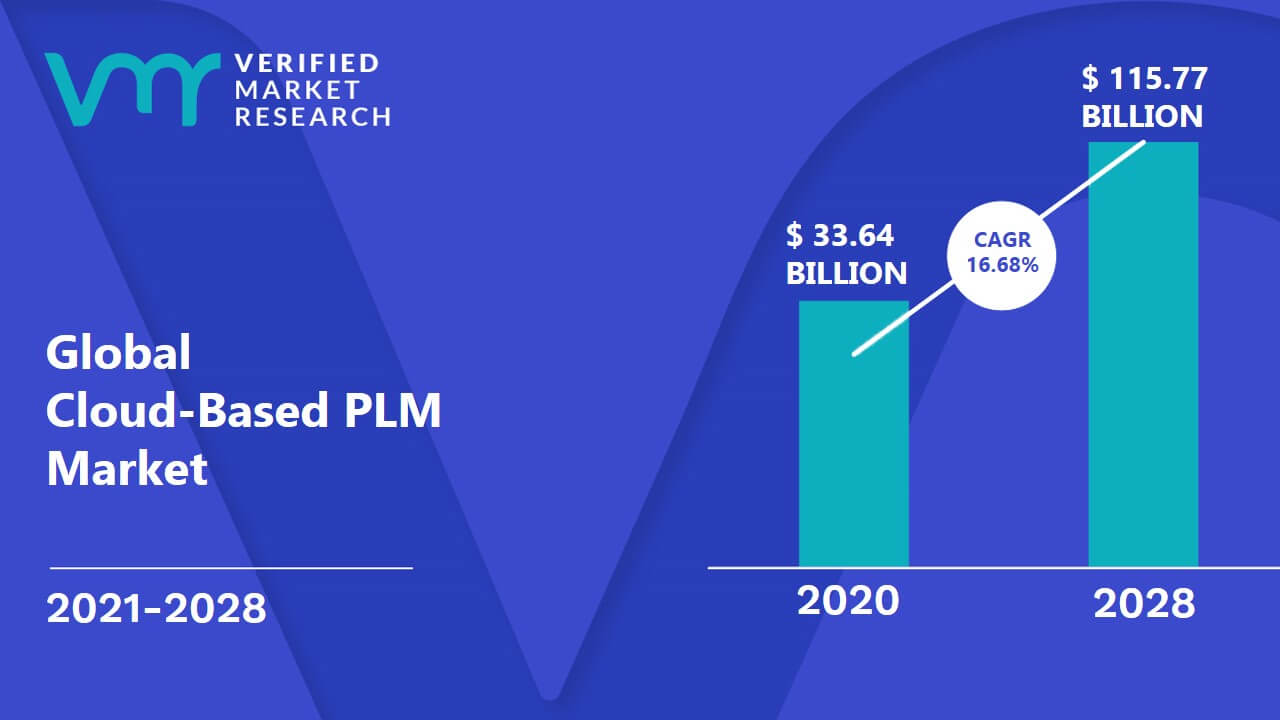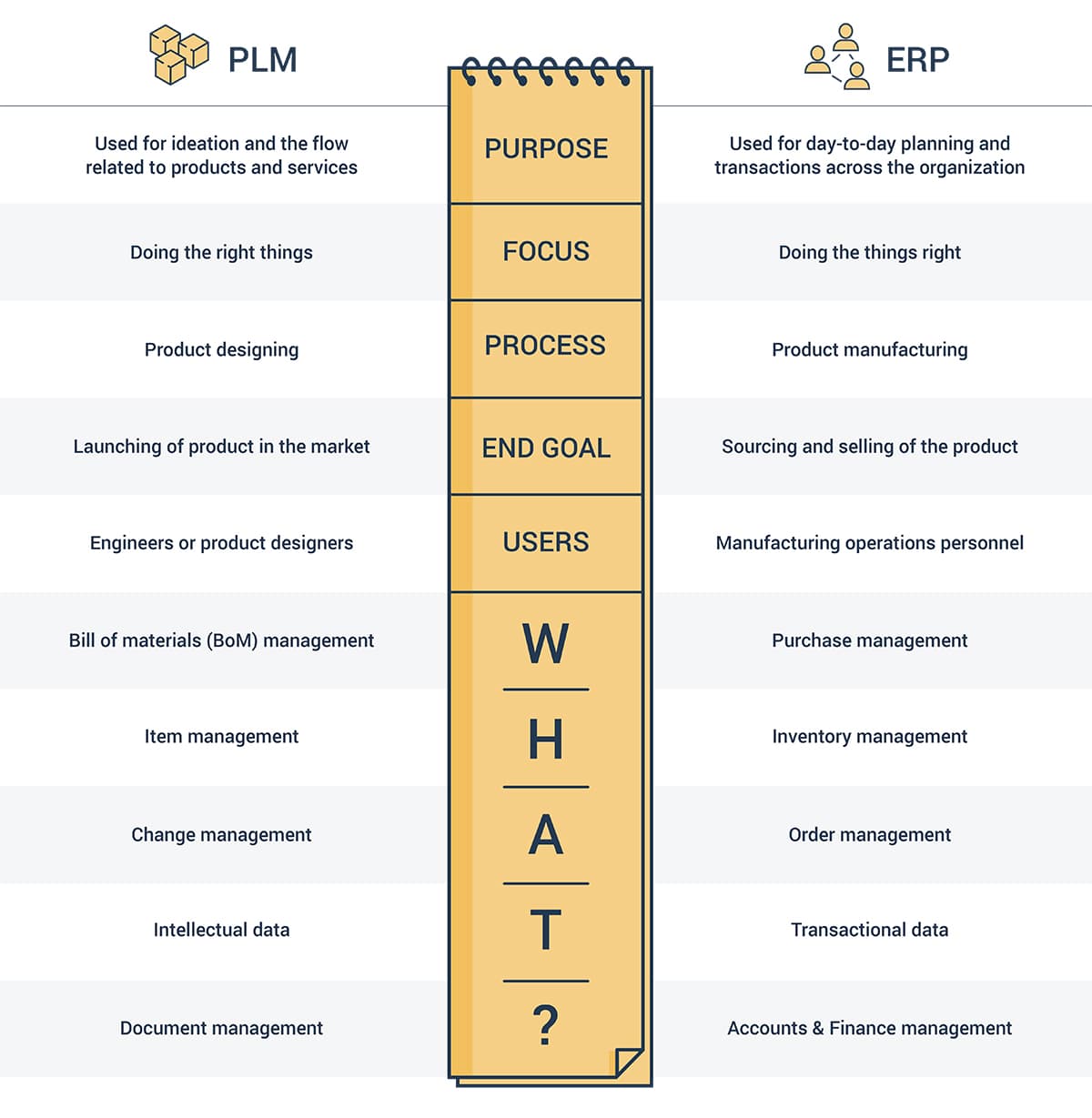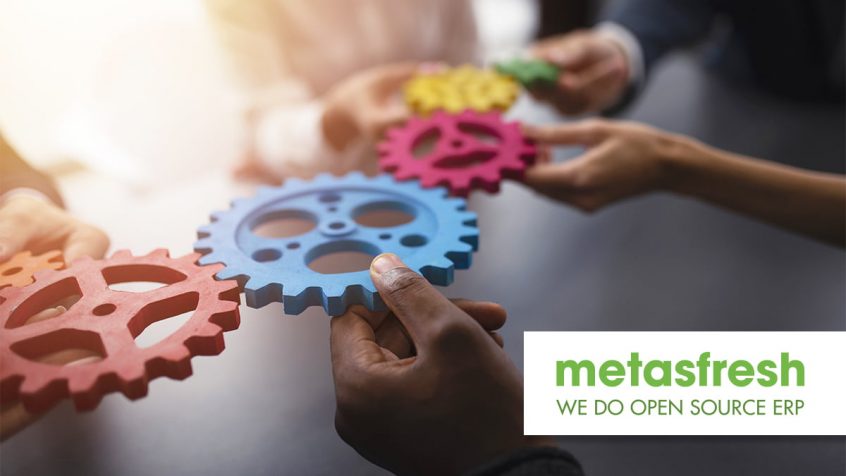Share this Post
Businesses of all shapes and sizes need to keep constant and efficient control of their operations and processes. From product ideas and concepts, right through to sourcing materials, selecting suppliers, production, marketing, and shipping to customers — not to mention finance and accounting, HR processes, and IT — having powerful and efficient business management systems is essential to the smooth and profitable operation of the business.
To this end, organisations rightly rely on Enterprise Resource Planning (ERP) software, Product Lifecycle Management (PLM) software, and Product Data Management (PDM) software to drive their business.
All three tools have unique features and assets that provide countless benefits to the organisation. ERP systems, for instance, are composed of powerful and strategic business process management tools that make it possible to optimise manufacturing processes, connect suppliers and partners, and manage financials (to name but a few). PLM systems, meanwhile, allow organisations to control the ideation, innovation, and design processes of a product — while PDM systems (a subset of PLM) capture and manage all information and metadata linked to product design.
The respective market for each solution is growing — indicating that all are essential to developing and launching innovative and profitable products.
The global ERP market was valued at $39.3 billion in 2019, and is projected to reach $86.3 billion by 2026, growing at an impressive CAGR of 9.8% from 2020 to 2027, according to figures from Allied Market Research. “Factors such as increase in need for operational efficiency and transparency in business processes and rise in demand for data-driven decision-making are expected to fuel market growth,” the report says. “In addition, surge in adoption of cloud as well as mobile applications is expected to drive the growth of the enterprise resource planning market.”
Similarly, the global cloud-based PLM market, valued at $33.6 billion in 2020, is expected to reach $115.77 billion by 2028, growing at a CAGR of 16.68% over the forecast period, according to Verified Market Research. The global PDM market is also anticipated to rise at a considerable rate between 2021 and 2027.

Cloud-Based PLM Market Size And Forecast. —Source: verifiedmarketresearch.com
ERP vs. PLM
The benefits of ERP systems and PLM systems (and associated PDM systems) are well known. These solutions all help businesses organise mission-critical information, streamline operations and improve the bottom line.
They each have their own function, however.
PLM/PDM systems are software solutions that help businesses manage complex product development workflows — from ideation, to design, to manufacturing. Solutions integrate data, workflows, and people to manage product life cycles in their entirety in the most efficient and cost-effective way.
An ERP solution, on the other hand, is a centralised business management system that integrates the core functions of the organisation — including procurement, HR, finance, supply chain, sales, and marketing — into one fully orchestrated and overarching system.

PLM vs. ERP —Source: hubspot.net
The main differences between ERP and PLM/PDM is that PLM is about the ideation, innovation, and design phases of a product (used by product designers and engineers), while ERP is about the actual making of that product (used by manufacturing operations personnel), and deals with the movement of materials — inventory management, production scheduling, supply chain logistics, etc.
Design Rule puts it succinctly: “PLM and ERP go closely hand in hand in most leading manufacturing companies. PLM manages the innovation and design process, while ERP ensures quality products are manufactured in a timely, cost controlled manner once a product has been engineered and approved.”
The Value and Benefits of Integrating ERP and PLM/PDM Systems
Both systems play critical roles in the enterprise. However, even when they are using both, many organisations are not realising the full benefits of these systems for the simple reason that they treat them as standalone solutions that serve different parts of the business. While it is of course true that ERP and PLM/PDM systems support different business needs — it is equally true that they are complementary. After all, as the Design Rule definition above makes clear, once a product has been designed and manufactured (PLM), it is the ERP system that then manages downstream activities — including production resource planning and financials.
As such, the proper coordination, synchronisation, and integration of these systems can add value beyond what either can deliver on its own. Indeed, integrating ERP and PLM systems improves efficiency and data quality. It also eliminates the pitfalls of managing processes separately, as integration ensures everyone across the company is using the most up-to-date product data at all stages throughout the product life cycle.
By centralising data between your PLM and ERP systems through integration, you can improve critical upstream and downstream processes, and ensure continuous cost, quality, and product improvements.
Further benefits of ERP and PLM integration are as follows:
Increased Efficiency: When your PLM and ERP are not integrated, it is the task of various back-office employees to manually enter and re-enter data across the two systems (and fixing errors that inevitably occur during such processes). By integrating ERP and PLM systems, the processes of updating and transferring data are entirely automated — eliminating the potential for human error, while freeing your employees to utilise their valuable time focussing on more business-critical tasks. In addition, automation means the near real-time of data transfer — meaning that everyone is always informed of the current status and has actionable operations-related information at their immediate disposal.
Increased Coordination and Collaboration Across the Business: ERP-PLM integration means all departments are working from and have access to the exact same data. This is especially beneficial to larger organisations, where clear communication across multiple departments is crucial for business success — though of course, SMEs will benefit equally (especially if teams are working remotely). Without integration, it is often the case that different departments do not have access to each other’s data — or non-compatible formats are used across the different systems — leading to communication issues, mistakes, inefficiencies, extra costs, and revenue loss. By contrast, integrating ERP and PLM provides everyone with automatically updated information, encouraging communication and collaboration between departments, leading to better alignment, increased performance, and enhanced productivity.
Cost Reductions: The efficiency enhancements of ERP-PLM integration also lead directly to cost savings for the organisation. Since data transfers happen automatically between the systems, manual intervention is minimised as the inputting of data only needs to happen once instead of twice. This increases accuracy and ensures consistency between the two systems. In a real-world environment, this enhanced accuracy means that businesses can prevent things like supply shortages — which can delay the delivery of orders and increase supply chain costs — or, conversely, save money on carrying excessive supplies. In short, having all your data in one place gives you a crystal-clear picture of operations at all times, allowing you to identify all areas for business improvement and opportunities to reduce costs.
Higher Customer Satisfaction: Combined, the increased efficiency, improved collaboration, and error reduction enabled by ERP-PLM integration leads to happier, more satisfied customers, as you can fulfil their orders more quickly and with a higher degree of accuracy. It also means that, with more and more of your processes being automated, your employees can focus more on order fulfilment, customer care, and product improvement. Better access to organisation-wide data also means you can pay closer attention to pricing strategies, potentially opening up opportunities to make competitive adjustments to expand your customer base.
Final Thoughts
More and more enterprises are realising the benefits of seamless ERP and PLM/PDM integration. It is crucial, however, that you select an ERP system that supports integration with third-party applications. Older systems are often limited in their ability to integrate with external applications, while many newer offerings tend to limit integrations with vendor-specific products.
metasfresh ERP allows you to integrate whatever applications you wish, including PLM and PDM solutions, allowing you to build a comprehensive, fully-integrated system so you can reap the full benefits of making your business-critical tools work seamlessly as one.
Talk to us here at metasfresh about how we can help you design and implement a fully-fledged ERP-PLM integration. Since 2006, we have been developing our metasfresh ERP software non-stop with open source components and under the open source licenses GPLv2 and GPLv3. Our mission is to enable each and every company to access a powerful ERP system with the aim of fuelling corporate growth. Get in touch today for more information and insights.
Share this Post



